The Bogeyman
Deadpool 12,003
Part of a series on Nightmare Fuel. [View Related Entries]
This entry has been rejected due to incompleteness or lack of notability.
To dispute this DEADPOOL flagging, please provide suggestions for how this entry can be improved.
The Bogeyman
Part of a series on Nightmare Fuel. [View Related Entries]
This entry has been rejected due to incompleteness or lack of notability.
To dispute this DEADPOOL flagging, please provide suggestions for how this entry can be improved, or request editorship to help maintain this entry.
NOTE: This Entry was related to the 2013 April Fools joke. For more information, please check out the KYMdb Offline Crisis Response Initiative.

| Navigation |
| About • Origin • Spread • Search Interest • External References • Recent Images • Recent Videos |
About
The Bogeyman (also spelled as bogieman, boogeyman or boogieman) is an imaginary creature commonly used by adults to scare and terrorize children into submissive behaviour by telling them that if they misbehave, the bogeyman will get them. Unlike other creature-based creepypasta such as Slender Man and The Rake, the Bogeyman has no specific appearance in its stories and conceptions about it can vary drastically per nationality or household. Instead he is simply a non-specific embodiment of terror, who's goal depends on what purpose needs serving.
Origin
Bogeyman tales first made their appearance around the 16th and 17th century. According to the Online Ethymology Dictionary,[1] the word "bogey" is probably a variation of the German word bogge, which in turn is a variant of the Middle English bugge, meaning "a frightening specter". The earliest modern form of the word was "bogle" (definition: ghost), which was popularized around the 1800's in the English literature and based on the similar Scottish word attested around 1500.
Spread
In 1797, Spanish painter Francisco Goya made the paintwork Que viene el Coco, or "Here comes the bogeyman" (shown below). The definition for "bogeyman" differs per dictionary. So do Wikitionary[3] and the Merriam-Webster[4] describe him as a menacing and monstrous imaginary creature in children's tales. The Free Dictionary[5] and Thesaurus[6] give him a more direct description, describing him as a specter or ghost. The first description added to Urban Dictionary dates back to January 24th, 2004,[8] and describes him as a "a monster used to threaten children". Clear descriptions of the creature also differ per region of the world, but each are used as embodiments of terror used to cause children to behave. A list of 15 variations can be found on Listverse.[7]

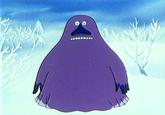



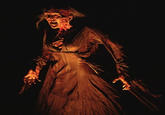
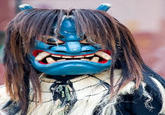

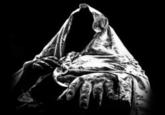
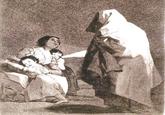

Comments ( 11 )
Sorry, but you must activate your account to post a comment.
Please check your email for your activation code.